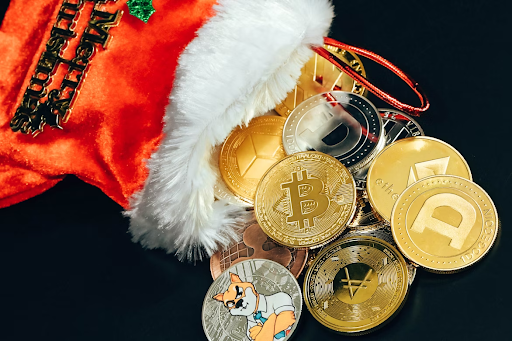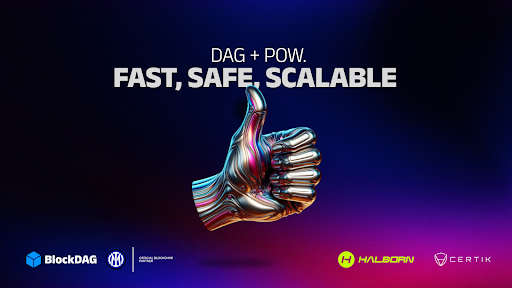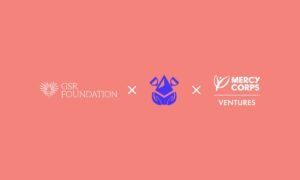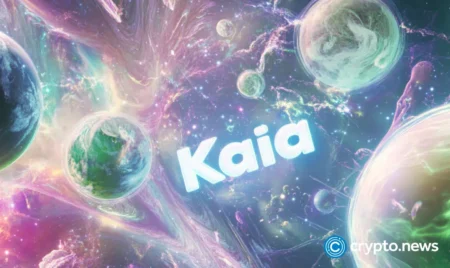Disclosure: This article does not represent investment advice. The content and materials featured on this page are for educational purposes only.
While DAG chains like Kaspa solve scalability, BlockDAG aims to connect this speed with real-world DeFi use cases, bridging DAG with payments, DEXs, and global finance by 2026.
In the last few years, Directed Acyclic Graph (DAG) technology has emerged as a fast, scalable alternative to traditional blockchains. Projects like Kaspa have proven DAG’s potential with high throughput and near-instant confirmations. Yet, one gap remains, real-world adoption. DAG chains have yet to meaningfully integrate with decentralized finance (DeFi), payments, and global value transfer.
That’s where BlockDAG is positioning itself. With a hybrid PoW+DAG architecture, EVM compatibility, and a roadmap focused on real-world financial tools, BlockDAG is doing more than scaling. It’s building the infrastructure to bring DAG technology into day-to-day finance, remittance, and on-chain trading, areas where scalability alone hasn’t been enough.
DAG alone isn’t enough, what’s been missing?
While DAG networks like Kaspa have solved some of blockchain’s deepest pain points, namely slow block times and throughput limits, they’ve largely focused on base infrastructure. Few DAG-based platforms have moved beyond the protocol layer. The result? Despite the tech advantage, usage has remained niche.
BlockDAG seems to have learned from this. Rather than rely solely on the novelty of DAG throughput, it pairs its architecture with several key components absent in earlier DAG networks:
- Proof-of-Work consensus to ensure security and decentralization
- EVM compatibility to onboard Ethereum-based developers
- A no-code dApp builder to democratize access
- DeFi-first infrastructure like DEXs, cross-chain bridges, and oracles
This layered approach aims not just to build a high-speed chain, but one that can carry real financial weight.
Building toward real-world utility
BlockDAG’s roadmap shows a clear intent to integrate DeFi and real-world use cases directly into the Layer 1 fabric. In Q4 2025, just two weeks before exchange listing, the network will activate key DeFi modules including:
- A native decentralized exchange (DEX)
- Lending and borrowing protocols
- On-chain indexers and oracles
- A multi-chain bridge for cross-network liquidity
These aren’t features planned far into the future, they are part of the six-week rollout timeline before listing begins. In a space where many chains promise post-listing development, BlockDAG is bringing that infrastructure to life before price discovery.

But what stands out most is its long-term goal: to become a DAG-based settlement layer for real-time payments, cross-border remittance, and DEX routing. It’s the piece many scalable chains have missed, how to turn speed into utility.
Why PoW+DAG matters for payments
BlockDAG’s architecture borrows security from Bitcoin’s Proof-of-Work (PoW) while offering DAG’s parallel processing power. This hybrid model means BlockDAG can handle thousands of transactions per second without sacrificing security, critical for financial transactions.
In traditional Layer 1s, validators often batch transactions for efficiency, but that batching introduces latency, an issue in payment processing. BlockDAG’s DAG model enables parallel confirmation, while its PoW backbone ensures immutability and trustless consensus.
This combination makes it a potential fit for:
- Decentralized point-of-sale systems
- Real-time FX settlements
- Cross-border DeFi micro-transactions
- DEX routing with sub-second execution
These are not abstract use cases. If BlockDAG’s infrastructure rollout keeps pace with its roadmap, early adopters could be using BDAG for these functions by mid-2026.
Adoption momentum is already building
BlockDAG has already raised over $318 million in its presale, sold 23 billion BDAG coins, and attracted 2 million+ mobile users to its gamified mining app, X1. More than 18,000 ASIC miners have also been sold, with X30 and X100 deliveries beginning July 7, and X10 rigs shipping from August 15.
This momentum isn’t just hype, it’s resource mobilization. Funding at this scale gives BlockDAG the firepower to support its builder ecosystem, launch DeFi layers, and maintain low-latency, high-throughput performance.

Further, its presale pricing strategy shows both confidence and strategy. While Batch 29 is priced at $0.0276, a limited-time offer of $0.0020 is still active, creating urgency ahead of a confirmed listing at $0.05, a potential 2,400%+ ROI window for early participants.
Not just a DAG chain, a Layer 1 built for finance
Where most DAG-based networks have focused on protocol-level speed, BlockDAG is building a top-to-bottom financial stack. It’s not just offering scalability, it’s building a use layer on top of that scalability.
Its roadmap is structured, its tools are already live, and its financial layer is timed to launch in sync with token availability. That level of alignment is rare among early-stage Layer 1s, and it’s exactly what makes BlockDAG a standout bet for users who care about actual crypto utility.
If the vision holds, BlockDAG might not just match what Kaspa achieved technically, it may exceed it functionally, by becoming the first DAG-based network to drive mainstream financial use.
Because speed alone doesn’t change finance, but scalable, secure, and usable speed just might.
To learn more about BlockDAG, visit its presale, website, Telegram, and Discord.
Disclosure: This content is provided by a third party. crypto.news does not endorse any product mentioned on this page. Users must do their own research before taking any actions related to the company.
Read the full article here










